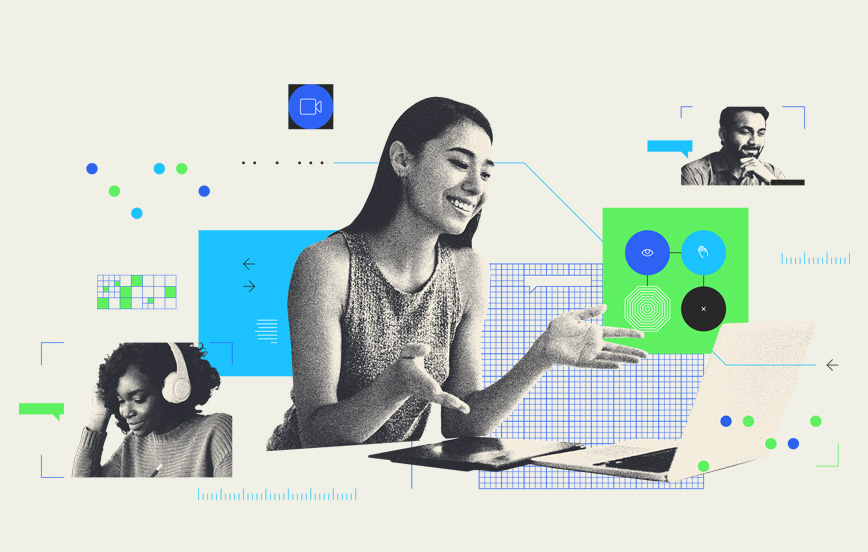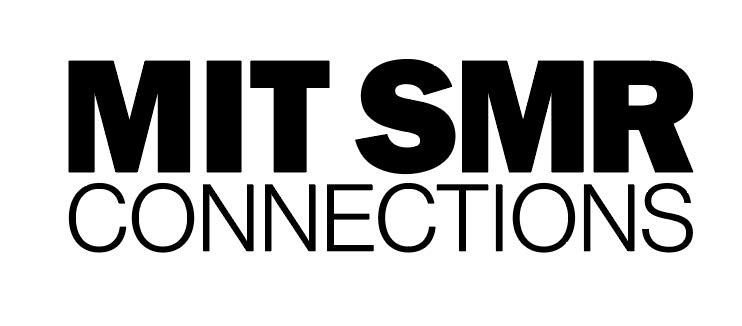Inside the new innovations to prevent video-meeting fatigue
In 1999, scientists and researchers noticed a troubling trend in an exciting emerging technology: videoconferencing was causing fatigue in people using it for extended periods.
“Interacting over an audio-video system requires more cognitive load than does interacting over audio only,” stated one study. People “can be cognitively overloaded by tasks demanding too much processing capacity.”
The issue was intriguing, but largely ignored until 2020, when millions of people began using videoconferencing almost overnight. Once again experts looked into the problem, including one research fellow at Stanford University who asked a central question: What exactly is video-meeting fatigue, and are there ways to reduce the effects?
The answers, it turned out, presented a challenge for the future of remote work.
“We asked nearly 3,000 people things like: How much do your eyes hurt? How emotionally drained do you feel? To what extent do you feel like avoiding social contact after a videoconference?” says Geraldine Fauville, the Stanford researcher fellow and a professor in the department of education, communication, and learning at Gothenburg University in Sweden. “And we looked at motivational fatigue—were they too tired to do something after videoconferencing?”
Fauville’s findings showed that the more people used videoconferencing, the more drained they became. But the specific reasons they felt “brain fog,” as researchers dubbed it, were nuanced. People, many working from home for the first time, felt physically trapped in front of their screens. They were overbooked with meetings, as it became the default way of checking in on employees, brainstorming with colleagues, and handling everyday tasks. Logging into a videoconference ten times a day became taxing, and the smallest distractions were exhausting. The subjects of Fauville’s research also described feeling as if everyone on the call was staring at them, causing social anxiety similar to what you might experience while standing in front of a room full of people. “Those feelings are tiring,” she says.
Similar findings were being discovered elsewhere. In 2021, researchers in virtual human interaction realized that long periods of close-up eye contact can be taxing because it’s unnatural; seeing ourselves during chats is fatiguing; and video chats dramatically reduce people’s usual mobility, keeping workers glued to desks for longer periods. Likening videoconferencing to other new innovations, such as ride-sharing, that require periods of adaptation, the researchers stated that people are currently learning best practices for the medium. “We’re in that era now with videoconferencing,” the study states. “And understanding the mechanisms will help us understand the optimal way to do things for different settings, different organizations, and different kinds of meetings.”
The problems that Fauville and other researchers pinpointed are now leading to innovative solutions to create healthier online meetings for everyone—and transform how we connect in a remote-work world.
The new software relieving stress
In 2020, Javed Khan, the senior vice president and general manager of Cisco Collaboration, began noticing that people using Webex, the company’s videoconferencing platform, were experiencing fatigue. Curious, he and his team looked into the data and found a surprising trend. Workers were not only having more videoconference meetings, but they were having them at all hours of the day. “It became normal for somebody to have an 8 p.m. videoconference,” he says. Hearing that various companies were noticing meeting fatigue and burnout, they began working on a solution. “We initially focused on the software aspect,” he says. “Can software make it easier to relieve stress?”
First, Khan and his team removed the need to enter passwords each time you join a Webex meeting, creating a more seamless user experience. That simple fix eliminated a regular source of anxiety for people struggling to join back-to-back meetings on time. Next they removed background noise, a distraction that causes the brain to work harder to process sound, which can be fatiguing for all participants. The team also created more sophisticated solutions to combat fatigue, including AI-based features that foster engagement without requiring users to speak up. For example, remote workers who are less vocal often go unnoticed in video calls. To address this, Webex added a feature that makes it easier for everyone to get a turn speaking during large meetings by using a natural reaction like raising your hand.
“When you have 25 people on the call, how does someone interject without talking over another person? How does the introvert get involved?” Khan says. “We wanted to remove the stress associated with that.”
Webex uses AI to translate people’s natural, nonverbal gestures—a raised hand, a thumb up or down, clapping—into animated images that everyone in a meeting can see on screen, without having to unmute or use the keyboard or mouse. When a person raises their hand, it’s visible to everyone.
Webex also has real-time closed caption and translation capabilities in over 100 languages, so the meetings and content are more accessible to more people. This helps participants overcome stress due to auditory or language differences while enabling them to fully participate and contribute in ways they may not have been able to in the past. There’s even an integrated polling and Q&A tool that makes it possible to share feedback or ask questions—anonymously or not—so participants can share what’s on their mind without having to verbally interject.
The company’s devices also use software to help reduce stressors that arise during conference meetings or while sitting in front of the screen for a long time. Its cameras use dynamic framing, so people can get up and stretch their legs while remaining on screen, relieving physical fatigue from prolonged sitting without disappearing from view. These same cameras can also enhance the view of the conference room for remote participants by detecting people in the room and creating individual video streams for each of them, so every person is equally present on screen. This makes it easier for remote participants to read the room and gauge how people are responding to what they are saying or presenting.
Personalizing tech to create better meetings
Based on the success of these early innovations, Khan and his team began designing other enhanced features too, often workshopping them with Cisco employees before releasing them to the world. They came up with portable videoconferencing devices, so remote workers can have a dedicated screen for meetings at home, eliminating some of the physical strain that can come from hunching over a laptop.
One discovery occurred when Khan and his team realized that many meetings could be handled without actually meeting. So in August 2021, Cisco launched Vidcast, a video messaging tool that enables asynchronous communication, with a time lag between sending and receiving information. By structuring communication this way, the tool removes the hurdles of time zones and trying to find a meeting time that works for everyone, provides more flexibility for differing work styles, and alleviates the stress associated with being available and responsive at all times.
Vidcast makes it easy to record a video or capture content on a user’s screen—like a training session or product demo—using just a browser. Within seconds, it’s ready to share. People can add reactions and comments after they’ve had time to view the information. In addition, recorded Vidcasts can be integrated into Webex’s polls and Q&As to capture even more feedback, all without requiring an actual meeting.
Khan and the Webex team also began adding features that give people the ability to easily assess how they’re spending their time at work. These Personal Insights show users how much of their day is dedicated to video calls, then offer feedback and tips to improve work-life balance, like setting up quiet hours with no scheduled meetings. Leveraging AI, Personal Insights enables employees to set preferences and goals to take control of their workday.
“Personal Insights can help you be a more effective manager,” Khan says. “It will suggest that you should reschedule a certain meeting, for instance, if you’re always scheduling it after-hours and nobody’s showing up. Or it can even suggest that you connect with a specific employee because you haven’t talked to them in two weeks, even though you used to chat every other day.”
Khan recalls one early observation that came from this feature: During the pandemic, people worked later into the evening and their lunch breaks were shrinking, even in countries where traditions allow for longer lunches or midday breaks. In other words, many employees were working more than ever. With Personal Insights, they have the chance to achieve healthier work-life balance.
Ultimately, Khan and his team believe that the best technology is also the most intuitive, which is why they’re committed to improving the little things to reduce fatigue and stress. If you’re recording a meeting, for example, Webex uses AI to automate common collaboration tasks using voice commands. At the end of a recorded meeting, you have a transcript with highlights and action items that can be easily shared for follow-up.
“The feature allows you to worry about one less thing in a video meeting,” Khan says. “It’s like your own virtual assistant, taking work off your plate.”
Going forward, Khan believes online meeting tools will become even more intuitive, blending our virtual and physical lives in new ways to enhance how we interact.
“Virtual and augmented reality will continue to enhance our experience, enabling us to collaborate via holograms” he says. “In addition, tools will help take work off our plates—making our lives more efficient and our work easier.”
For more information on combating video-meeting fatigue to create healthier online meetings for everyone, and transform how we connect in a remote-work world, explore Hybrid Work with Webex.





